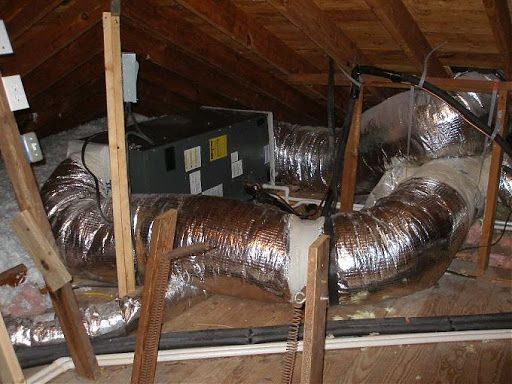How to Identify Bad Ductwork
Is your ductwork devouring your heating and Cooling before the conditioned air gets to your rooms?
National Comfort Institute tested many systems and found that 20% to 42% of the system capacity was lost due to improper ductwork. What this equates to is a 4 ton unit is now a 3 ton unit. These people were told they were buying a 20 SEER unit, but in reality it was performing at about 10-12 SEER. Wow!! What an unexpected result.
What does the International Residential Code® Have to Say About the Size of Your Ductwork?
The IRC® says that ductwork is to be sized using ACCA Manual J® (M1601.1 Duct design). This process takes into consideration the amount of volume of air your specific blower is going to be moving and the length of the duct. This data, along with some additional boring technical stuff, will then determine the needed diameter of the ductwork. Ductwork of any smaller diameter will cause high blood pressure (High Static Pressure) in the duct system and cause major problems with other components of your heating and air conditioning equipment.
You can think of your ductwork moving air just like your veins moving blood. If your ductwork is too small (High Static Pressure) there is major unnecessary stress put on your blower motor and especially your compressor, which is the most expensive part of your entire system to replace.
What does the International Residential Code® Have to Say About the Installation of Your Ductwork?
Ductwork is to be installed with UL181 products and follow manufacturer’s installation instructions. Do you remember buying a low priced roll of duct tape and shortly after you used it, it started falling off? That’s because the adhesive is rubber based but UL181 tape is acrylic based. The difference you ask? Rubber will dry out over time but acrylic based adhesive lasts nearly forever! 10 years later you can hardly remove the tape from the surface it’s been applied to. Duct sealer is also to be UL181 approved for very much the same reasons. Keeping the duct together and holes sealed is exactly what you want for a long lasting, energy efficient duct system.
The installation instructions also state the ductwork needs to be properly stretched, supported and bends in the duct be as subtle as possible. All of this to insure the air can move through the ductwork as freely as possible.
There’s so much more to say
I’m out of space so I’ll stop here for now, but if you’d like more information contact me at gary@garys.com or call the office 806-373-2537.



